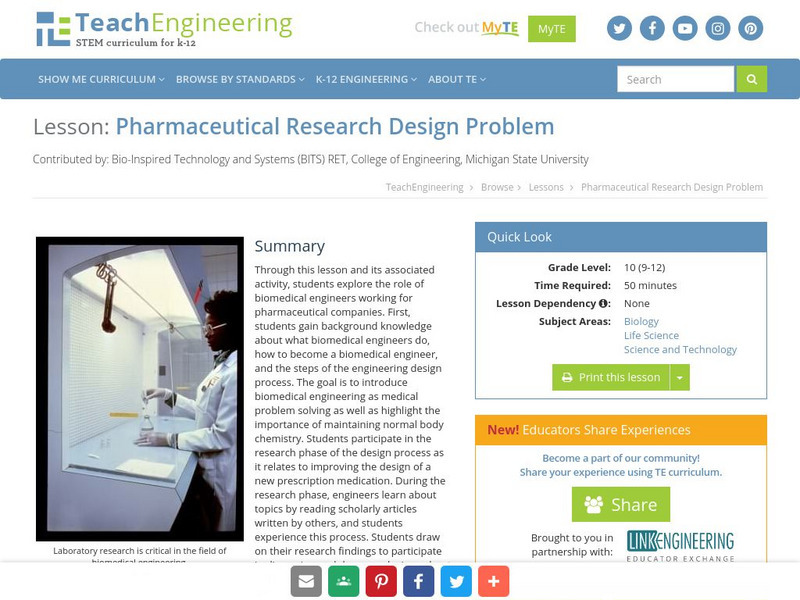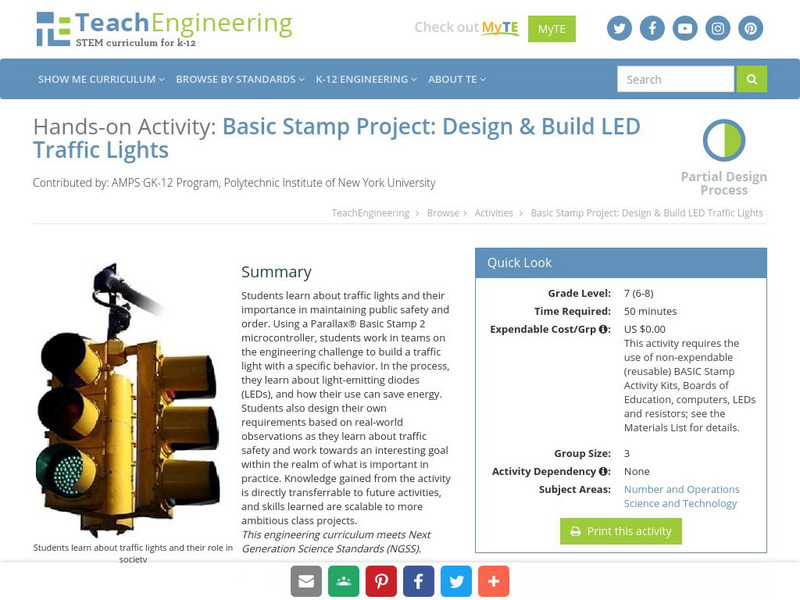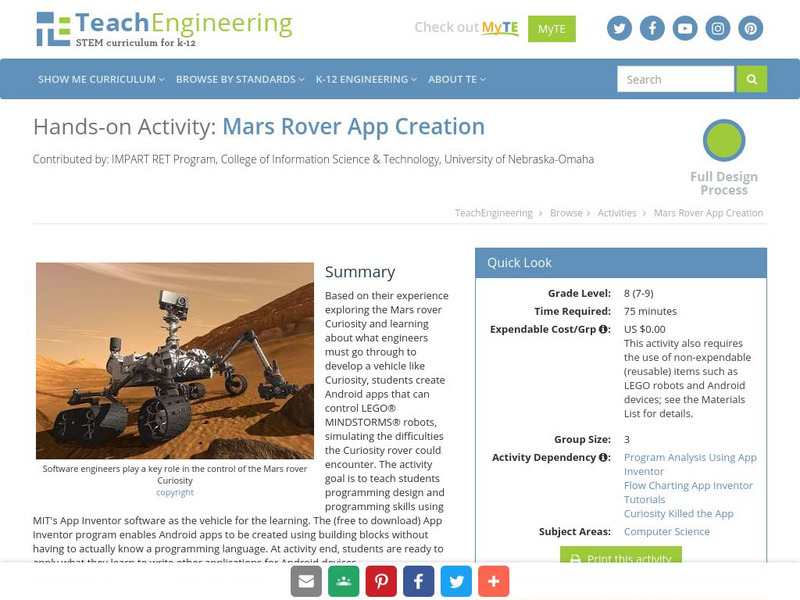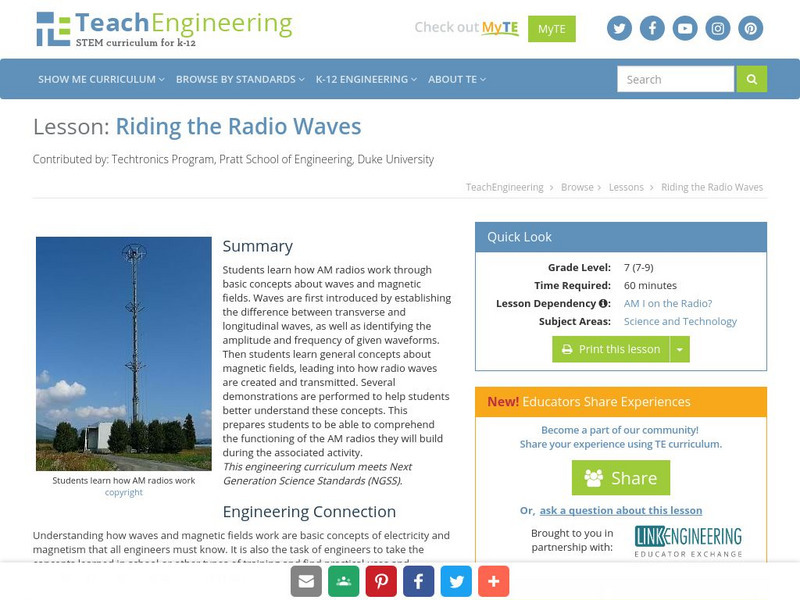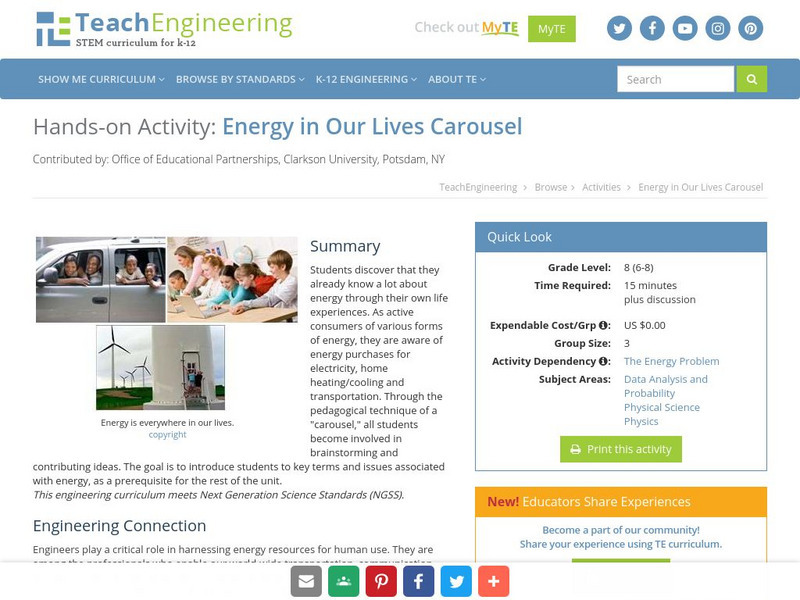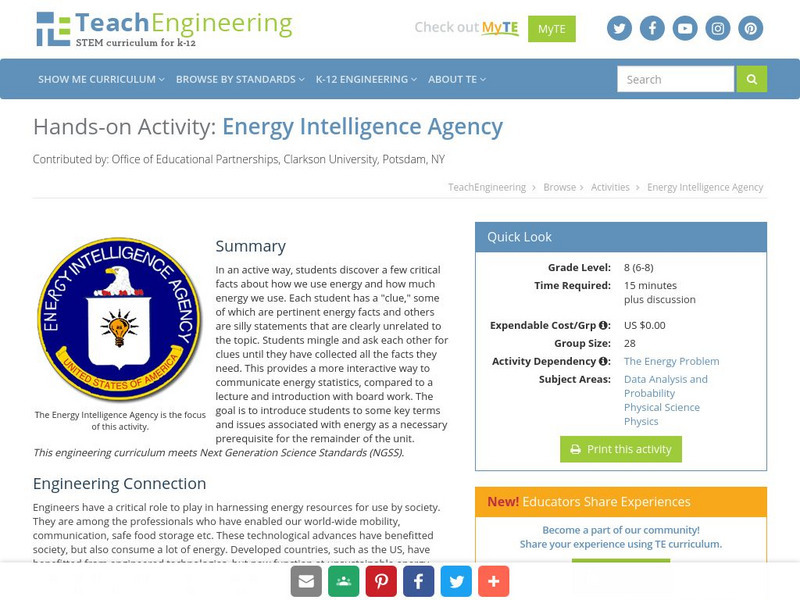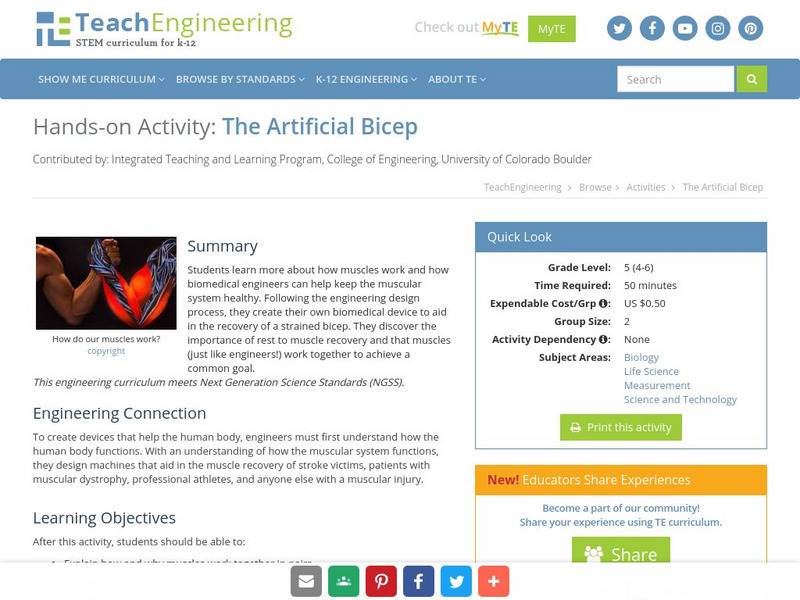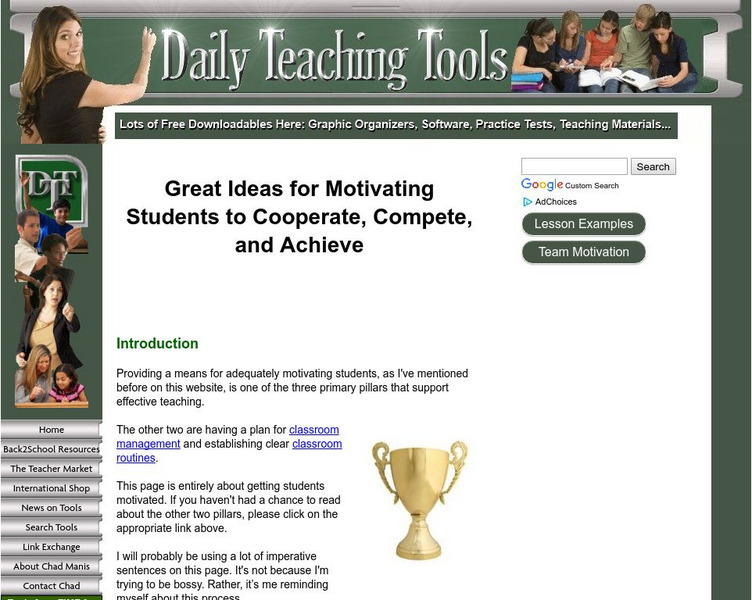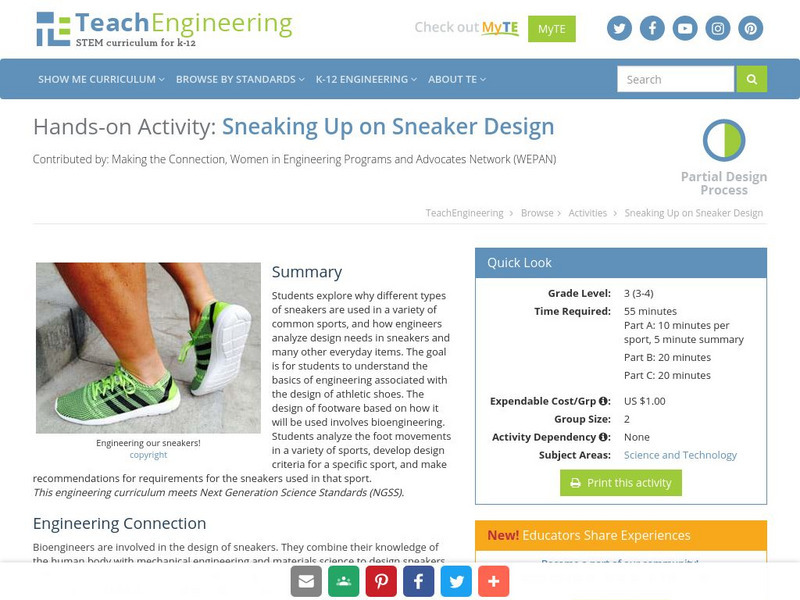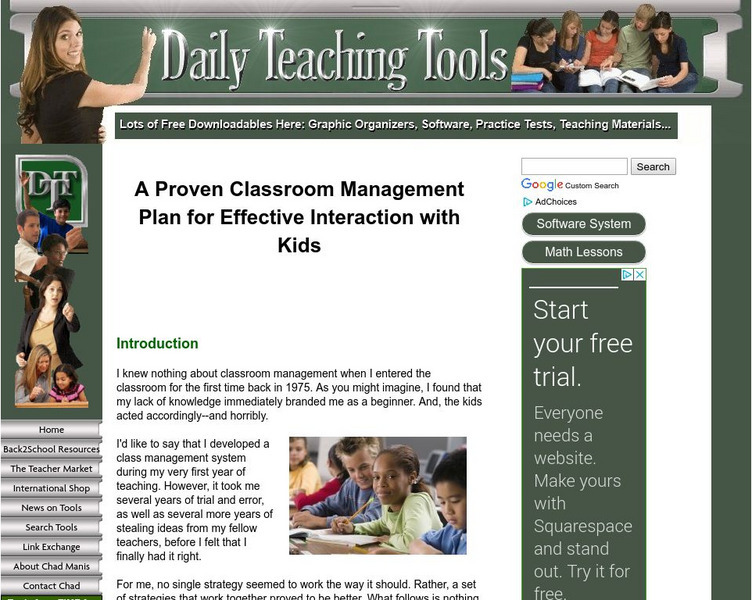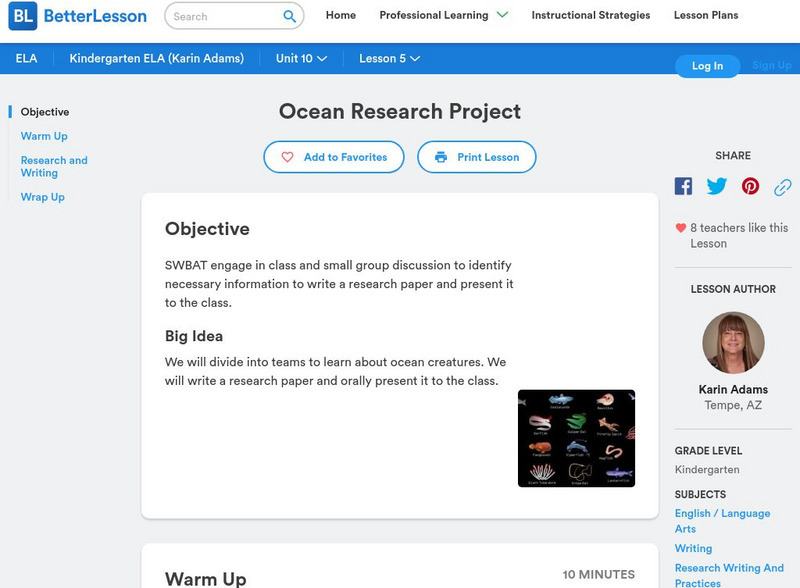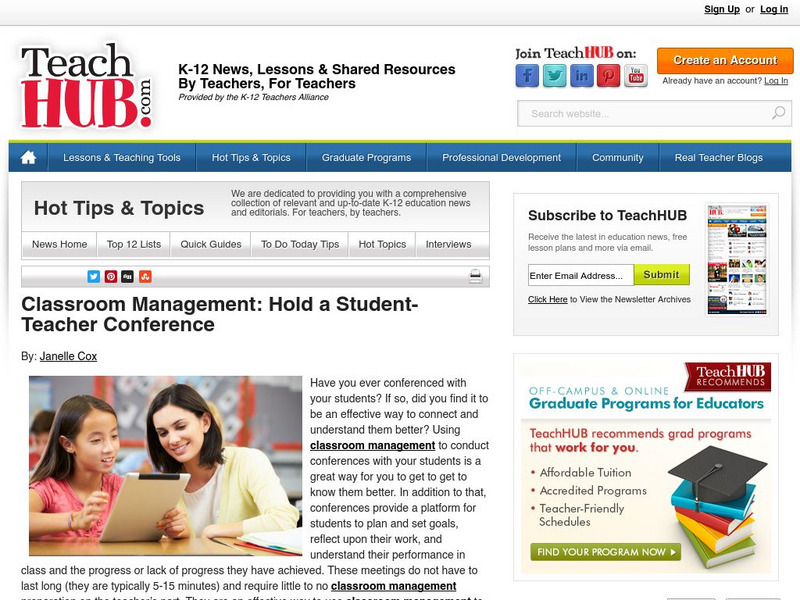Hi, what do you want to do?
Transforming Education
Self-Efficacy Toolkit
A PowerPoint presentation prepares instructors for teaching learners about self-efficacy, a key competency of social-emotional learning. The 29-page presentation is designed to give administrators and teachers a deeper understanding of...
American Psychological Association
Teaching Is Fundamental
It's important for teachers to have a strong support system—especially in the first few years of their career. Help teachers' partners, spouses, and friends understand the most compassionate ways to provide emotional support with a...
New York State Education Department
TASC Transition Curriculum: Workshop 11
You'll C-E-R a difference in classroom achievement after using a helpful instructional activity. Designed for economics, civics, government, and US history classes, participants practice using the CER model to craft arguments about...
Transforming Education
Self-Efficacy Strategies
Scholars with high levels of self-efficacy perform better in school. Instructors review a list of strategies for enhancing self-efficacy skills. They discover how to teach learners to appropriately define success, celebrate progress, and...
New York State Education Department
TASC Transition Curriculum: Workshop 5
Are video games sports? Pupils investigate this question as well as various nonfiction selections to learn more about claims and the support that defines them. All of the selections mimic the rigor on state tests and encourage close...
Scholastic
Scholastic: Teaching Tools: 6 Steps to Helping Students Set Strong Reading Goals
This site offers six steps to helping students set strong reading goals. It all starts with inspiring your students to think about who they are as readers.
TeachEngineering
Teach Engineering: Pharmaceutical Research Design Problem
Through this lesson and its associated activity, students explore the role of biomedical engineers working for pharmaceutical companies. First, students gain background knowledge about what biomedical engineers do, how to become a...
TeachEngineering
Teach Engineering: Traffic Lights
Students learn about traffic lights and their importance in maintaining public safety and order. Using a Parallax Basic Stamp 2 microcontroller, students work in teams on the engineering challenge to build a traffic light with a specific...
TeachEngineering
Teach Engineering: Mars Rover App Creation
Based on their experience exploring the Mars rover Curiosity and learning about what engineers must go through to develop a vehicle like Curiosity, students create Android apps that can control LEGO MINDSTORMS NXT robots, simulating the...
TeachEngineering
Teach Engineering: Riding the Radio Waves
In this instructional activity learners learn how AM radios work through basic concepts about waves and magnetic fields. Waves are first introduced by establishing the difference between transverse and longitudinal waves, as well as...
TeachEngineering
Teach Engineering: Energy in Our Lives Carousel
This activity is a way for students to discover that they already know a lot about energy through their own life experiences. As active consumers of various forms of energy, they are aware of energy purchases for electricity, home...
TeachEngineering
Teach Engineering: Energy Intelligence Agency
This activity provides an active way for students to discover a few critical facts about how we use energy and how much energy we use. Each student has a "clue", some of which are pertinent energy facts and others are silly statements...
TeachEngineering
Teach Engineering: The Artificial Bicep
Learners learn more about how muscles work and how biomedical engineers can help keep the muscular system healthy. Following the engineering design process, they create their own biomedical device to aid in the recovery of a strained...
TeachEngineering
Teach Engineering: Designing a Package That Works
The goal is for young scholars to understand the basics of engineering associated with the packaging of items to preserve, market, and safely deliver products. The packaging for each type of use varies. While observing and thinking about...
TeachEngineering
Teach Engineering: Super Slinger Engineering Challenge
Students are challenged to design, build and test small-scale launchers while they learn and follow the steps of the engineering design process. For the challenge, the "slingers" must be able to aim and launch Ping-Pong balls 20 feet...
Daily Teaching Tools
Daily Teaching Tools: Work as a Team to Achieve a Common Goal
This Daily Teaching Tools resource provides information about the importance of cooperation. Students will learn strategies to help students work together as a team.
TeachEngineering
Teach Engineering: Will It Fly?
In this lesson plan, students will learn about kites and gliders and how these models can help in understanding the concept of flight. Students will design and build their own balsa wood models and experiment with different control...
TeachEngineering
Teach Engineering: Sneaking Up on Sneakers
This activity explores why different types of sneakers are used in a variety of common sports. It connects how engineers analyze design needs in sneakers and everyday items. The goal is for students to understand the basics of...
Daily Teaching Tools
Daily Teaching Tools: Establishing Expectations
This Daily Teaching Tools resource provides an explanation about the importance of setting high expectations for students. Goal-setting related to reading independently is included in the module. An example of a school-wide reading...
Better Lesson
Better Lesson: Cornerstone: Peer Review Fishbowl
In this lesson plan, 6th graders are shown what an effective peer review session looks and sounds like. While observing it, students have a silent discussion online about what they notice. They then fill in a peer review goal setting...
Better Lesson
Better Lesson: Ocean Research Project
Research paper writing is a lofty goal for kindergarten young scholars, but this lesson will expose them to the process without being overwhelming. Students will divide into teams to learn about ocean creatures and then write a research...
Scholastic
Scholastic Lesson Plan: A Chair for My Mother
This extensive lesson plan uses the Children's Literature book "A Chair for My Mother," by Vera B. Williams to teach the concepts of saving and reaching a goal. Primary students are the target for this lesson plan.
Consumer Financial Protection Bureau
Consumer Financial Protection Bureau: Comparing Saving and Investing
Students explore the differences between saving and investing and answer questions about which one they'd use to reach different financial goals.
Other
Teach Hub: Classroom Management: Hold a Student Teacher Conference
Using classroom management to conduct conferences with your students is a great way for you to get to know them better. In addition to that, conferences provide a platform for students to plan and set goals, reflect upon their work, and...











